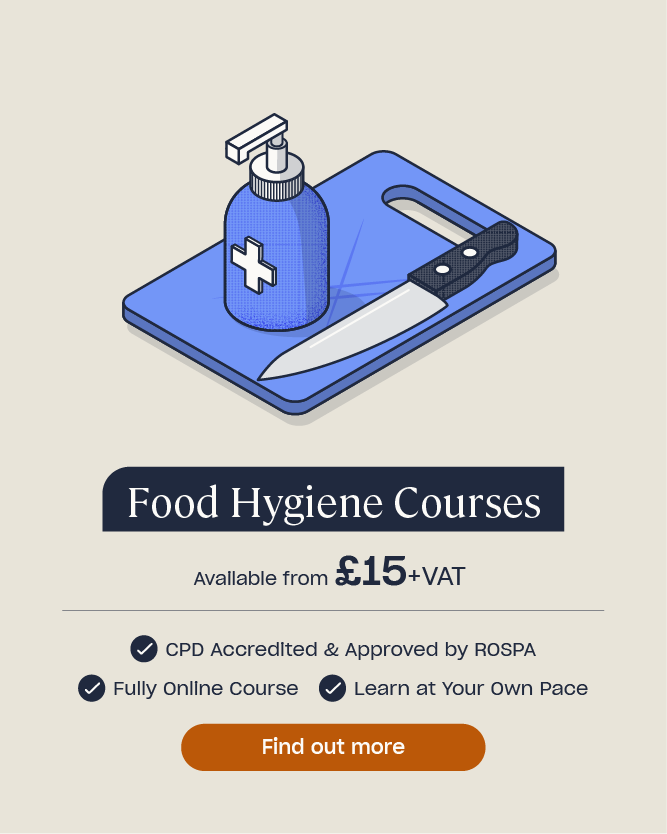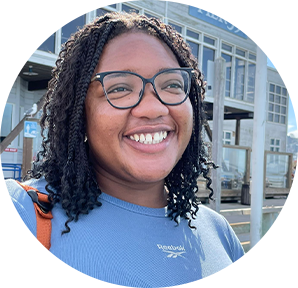How to Reduce Food Waste at Home
You may think that chucking away that overripe banana that’s been sitting in your fruit bowl far longer than it should, is no big deal. Binning those roast potatoes that it turns out you didn’t actually have room for surely can’t be doing much harm either; it’s just a little bit of food after all, right? Wrong. Food waste has a catastrophic impact on the environment as it wastes resources, generates greenhouse gases and leads to land degradation. In fact, despite 8.4 million people living in food poverty in the UK, around 9.5 million tonnes of food is wasted each year; more than enough to feed those 8.4 million.
However, despite being one of the largest contributors to greenhouse gas emissions, a few small tweaks is all it takes to drastically reduce your food waste and help protect the planet. In this article we will explore how food waste is generated in households, why it is a problem for the environment and provide 10 top tips to help you reduce food waste at home.
What is Food Waste?
There is no legal or universally accepted definition of ‘food waste,’ however the UK charity Waste and Resources Action Programme (WRAP) defines food waste as ‘food and inedible parts sent to one of several waste disposal destinations.’ Put simply, food waste is food that is wasted, lost or uneaten at any point in the supply chain. From farm to table, supermarkets to our homes, food can be wasted at any stage of the supply chain and this waste is harmful to both our planet and our pockets.
WRAP estimates that in 2021 the total amount of food wasted in the UK amounted to 10.7 million tonnes. 60% of this was generated from households and amounted to a staggering £17 billion worth of food; equivalent to £250 per person each year, or £1000 for a family of four. However, despite 10.7 million tonnes going to waste, somewhat paradoxically, food insecurity continues to rise in the UK. Food insecurity is when a person does not have reliable access to affordable, nutritious and healthy food. In January 2023, 17% of households faced food insecurity compared to 7.4% in January 2021. Food insecurity and food waste are intrinsically linked as food waste can lead to food scarcity and increased prices, making it harder for lower income households to afford food.
Food waste also has a negative impact on the environment and it contributes to climate change and environmental degradation in two ways; firstly through the release of greenhouse gases such as methane and secondly through the wasted energy and resources needed for initial production. The United Nations Environment Programmes food index report states that 8-10% of global greenhouse gas emissions are associated with food that is not consumed. This is because when food is left to rot in a landfill it releases methane, a greenhouse gas that has 28 times the global warming potential of carbon dioxide and is 84 times more potent.
The rearing of livestock also generates methane. In 2022, the Department for Environment Food & Rural Affairs (DEFRA) reported that 47% of the UK’s methane emissions were generated by ruminant agriculture; the process of rearing ruminant livestock such as cattle, sheep and goats for their milk, meat and other products. When this food is thrown away, the resources used to grow the agriculture or rear the livestock are wasted and greenhouse gas emissions generated for no reason.
Examples of Food Waste in Households
It can be hard to quantify 9.5 million tonnes of annual food waste and this often leads people to think that their own food wasting habits aren’t contributing to the larger problem. However, wasting food is often easier than you may think and households in the UK throw away, on average, 1.96kg of food per day, roughly equivalent to eight meals per week.
Seemingly innocent habits add up to significant amounts of food being wasted and it’s not just the odd spoiled banana that we throw away that contributes to this waste. Ways in which food is wasted in households includes:
- Plate Waste – Leftover food on plates that is either not in a fit state to be saved for later or is unwanted such as fruits and vegetables.
- Expired or Spoiled Food – Food that has expired or spoiled due to poor storage and/or handling. Date labels and a lack of understanding of food shelf-life can cause confusion amongst consumers. A misinterpretation of ‘best before’ can lead people to discard food that is still safe to eat as they gauge these date labels as indicators of food safety, rather than quality.
- Trimmed or Peeling Waste – Waste is generated when preparing food and vegetable peels, fruit skins and fat trimmings all contribute to food waste if they are not composted or used, where possible, in other recipes.
- ‘Ugly’ Produce – There are certain aesthetic requirements that many consumers have for their food, irrespective of whether it reflects the quality or suitability of the food itself. As such, consumers can be quick to throw away, or simply not buy, perfectly edible fruit and vegetables simply because it does not meet cosmetic standards.
- Leftovers – When unfinished food is left in a condition in which it can be saved for later, improper storage or a lack of inspiration as to what to do with leftover food, often leads to it being thrown away.
Food waste behaviour is multifaceted and most people do not set out with the intention to waste food. In fact, in the face of rising prices and the cost of living crisis, many people are more aware than ever of the economic impact of wasting food. However, food waste can be a cumulative problem in which throwing away small amounts of food each day or week generates tonnes and tonnes of waste.
This can be seen in the foods that are most wasted in the UK. These foods are often seen as inexpensive household necessities and as such are bought in large quantities in order to have them ready to hand when needed. Nevertheless, this can lead to people buying more food than they could possibly eat before it spoils and the food going to waste.
The top five most wasted foods in the UK are:
Bread 
It is estimated that approximately 900,000 tonnes of bread are wasted each year both at the production and consumer levels. At consumer level this is often caused by people buying larger loaves than they can eat and subsequently throwing away half finished loaves of bread.
Potatoes 
Around 750,000 tonnes of potatoes are wasted each year often due to overbuying, spoilage or visual imperfections that lead people to throw away perfectly edible potatoes.
Milk 
Surplus purchase similarly leads to milk being wasted and around 490,000 tonnes of milk are wasted annually in the UK. As milk is a highly perishable item, expiration and improper storage can often lead to it being wasted.
Bananas 
Bananas are one of the most wasted fruits in the UK with 1.4 million being thrown away every day, resulting in approximately 190,000 tonnes being discarded annually. Overripening or cosmetic imperfections are the main cause of banana waste and according to WRAP it takes 3,000 hectares of land just to produce the bananas we waste each year.
Salad and Vegetables 
Lettuce, tomatoes, cucumbers and other leafy greens are significant contributors to food waste. Approximately 170,000 tonnes of salad and vegetables are wasted annually in the UK often due to spoilage, overbuying or improper storage. It is also worth nothing that fruits and vegetables are often transported and sold covered in large amounts of plastic. Even when this food isn’t wasted, tonnes of plastic waste is generated from the packaging and production.
As mentioned, these foods are often seen as household essentials, regularly finding themselves on the weekly shopping list. Nevertheless, they also serve as the perfect example of how food waste is unconsciously generated. Many consumers would not think of the few slices of bread they threw away last week as being ‘significant’ food waste. However, when we consider that it is in fact a few slices being thrown away every single week for years on end, the problem becomes much more obvious.
Tips to Reduce Food Waste at Home
Whilst food waste is a significant issue, steps can be taken to help reduce the amount of waste generated and its impact on the environment. From adopting more sustainable food practices to making more effective use of your freezer, small tweaks to your food shopping and eating habits can make a huge difference to the amount of waste generated. Moreover, the government has shown a dedication to reducing food waste with steps such as adopting the Courtauld Commitment which seeks to reduce food waste by 50% by 2030.
Whilst these initiatives are encouraging supermarkets and restaurants to generate less waste or consider sustainable alternatives for waste they still create, it is important to remember that household food waste remains a massive contributor to food waste as a whole. As such, it is important that we as individuals take steps to reduce our food waste.
Here are 10 top tips to help you reduce your food waste at home:
Plan ahead 
Planning ahead can save you both time and money and help to ensure that you aren’t buying more food than you can eat. Write a list before you go shopping and check your kitchen first. What do you actually need to buy and what do you have enough of till you next go shopping? Planning ahead can also involve meal prepping. Meal prepping is a cost-effective way to plan and prepare meals in advance, ensuring that you are only buying what you can eat. It can also save you time as all of your meals for the week are already prepared, meaning you are less likely to pop to the shops on your way home and buy more food than you need. Meal prepping can also help with portion size. A WRAP survey found that 25% of people asked, threw away food due to cooking and serving too much. Meal prepping enables you to pre-portion your food, stopping you from cooking more than you can eat.
Make your freezer your friend 
Freezing food is a great way to preserve its freshness and prevent food waste. Freezing leftovers is probably what first comes to mind when thinking about how to best use the freezer and this is a great way to preserve leftovers for a handy lunch or a quick, low effort dinner. Freezing trimmed or peeling waste generated from food preparation is another great way to use your freezer and preserve what would have otherwise been wasted. You can also prep the necessary ingredients for a recipe ahead of time and freeze them so they are ready for when you need it. To make the most out of your freezer, it is important to know how to properly store food in the freezer. It’s also helpful to know how long you can freeze certain foods for. It can be very tempting to put something in the freezer and forget about it for months, or even years on end, but if you store food in the freezer longer than it should be, you run the risk of simply delaying the food waste that you were trying to avoid.
Compost 
Composting may sound like a daunting prospect but it is actually relatively simple and a great way to give your food waste a second lease on life. Composting at home stops food from rotting in landfills and provides you with great compost that benefits your garden. Many councils collect household food waste and can provide compost bins that they will collect regularly. Conversely, you can learn how to compost at home and buy a large composting bin or designate an area of your garden to create a compost pile. There are lots of different ways to compost requiring varying degrees of input to suit your needs, your space and your schedule.
Preserve your food 
Preserving food is an effective way to extend its longevity and keep household staples to hand without having to repurchase items. There are various different food preservation methods such as freezing, canning, sugaring, salting and even vacuum packing, all of which help to maintain food quality and extend its shelf life. Proper food preservation can help retain the taste, texture and appearance of food as well as helping food last beyond its usual expiration date.
Organise your kitchen 
Having a well organised kitchen can significantly reduce the amount of food waste that you generate. Overstuffed cupboards and fridges hide what lurks beneath and can result in that horror stricken discovery of food that expired months ago and has since grown a new lifeform! Implementing habits such as a food audit before shopping or stock rotation where you move older items to the front and new items to the back, can help you to manage your kitchen and have a better idea of the food you have in your house and what needs to be used first.
Buy loose 
Fruits and vegetables are often sold in large quantities covered in plastic. This often leads to waste as you end up buying more food than you need and throwing away the surplus. Buying fruit and vegetables loose enables you to buy solely what you need. For example, that recipe you are determined to get right this time might only require 2 carrots, not a 1kg bag that you tell yourself you’ll chop up for a healthy snack throughout the week but inevitably end up throwing away. Moreover, buying loose fruit and vegetables lets you pick the quality, shape, size and colour that you want, rather than hedging your bets with a bunch or large bag. Love Food, Hate Waste, an initiative launched by WRAP, estimates that if all apples, bananas and potatoes were sold loose instead of in bags sold by weight, 60,000 tonnes of food waste would be saved each year; that’s 8.2 million shopping baskets worth of food.
Donate any surplus 
Donating surplus food helps to ensure that your excess food is put to good use and benefits those in need rather than wasting away in a landfill. Research local food banks, shelters or charities that accept food donations and donate surplus food.
Give it a sniff 
As mentioned, date labels can be confusing and cause people to throw away perfectly edible food. In an attempt to combat this, in 2023 supermarkets such as Marks & Spencers, Morrisons and Sainsbury’s switched the labels on their milk to ‘best before.’ This was heralded as a big win for reducing food waste as it enables people to use their personal judgement on whether milk is still good to use, rather than throwing away perfectly consumable milk. The sniff test is an appropriate method for foods with a ‘best before’ date as this date denotes food quality not safety. If you’re unsure about the ‘best before’ foods in your fridge, give them a sniff and use sensory cues such as signs of visible mould or smell to determine if the food is still okay to eat.
Love your leftovers 
Knowing what to do with your leftovers can be the difference between them living to see another day or ending up in the bin because you can’t stomach yet another portion of Shepard’s Pie. Get creative with your leftovers and adapt simple dishes or side dishes into something new, quick and tasty. Leftovers aren’t just the bits and pieces left on your plate after a meal, they can also include vegetable scraps, leftover bread or those last few drops of mustard in the jar. These odds and ends can be bundled together to make a soup, or used to make salad dressing. The more imaginative you are with your leftovers the less daunting it will become and you will soon find yourself making use of food you may otherwise have thrown away.
Eat the ‘ugly’ 
As mentioned, cosmetic imperfections can lead people to throw away perfectly edible food. Not only does this stop us from picking up that three eyed potato at the supermarket, it can make us quick to throw away fruit and vegetables at home once they ‘turn ugly.’ However, these cosmetic imperfections are not necessarily reflective of the food’s safety or quality and do not automatically render the food dangerous to eat. Buying ‘wonky veg’ from supermarkets is often cheaper than the more aesthetically pleasing options and helps to stop those wobbly carrots ending up in a landfill.
There are various different ways to reduce your food waste at any and every stage of the meal preparation journey. When adopting these changes, ensure that they are suitable and sustainable for your lifestyle, as consistency is what makes these changes impactful and beneficial for our pockets and our planet.
Food waste feeds climate change. From the degradation of the land used to grow food that is then thrown away, to the billions upon billions of cubic metres of water that is wasted, food production draws resources from our planet at every stage of its life cycle. Making small, sustainable changes to our shopping and eating habits helps ensure that no good food ends up in the bin, thereby reducing our carbon footprint and helping to tackle climate change.







